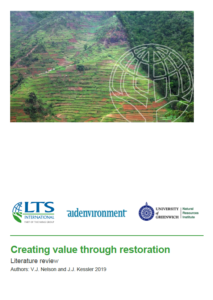This literature review conducted by the Partnerships for Forests (P4F) Evaluation Manager (NIRAS-LTS International) the following five causal relationships constitute significant risks that agricultural intensification will lead to the increased use of land and forests:
- The expansion of land use by targeted producers. When intensification leads to higher land or labour productivity and thus higher incomes for producers it creates an incentive for producers to further increase production volumes and incomes by expanding production areas, thereby undermining the goal of protecting forests.
- The displacement of production to neighbouring areas and jurisdictions (leakage). The implementation of effective protection mechanisms – thus minimising expansion into forests – in one locality could lead to the displacement of production (and deforestation) to other areas.
- Diversification or intensification of forest-resource activities by targeted producers. The higher incomes earned by producers due to intensification may enable them to engage in new activities (or to intensify existing activities) that increase pressure on forest areas (e.g. the purchase of weapons, leading to an increase in wildlife poaching).
- Crowding-in by non-targeted producers in the targeted geographical area. The higher incomes obtained by producers engaged in intensification could attract others to participate in the same activity by clearing forest areas.
- Displacement over time. Intensification is often associated with specialisation and monocultures, which may be unsustainable (e.g. by exhausting soils or attracting pests). Over time, this may lead to environmental degradation (e.g. soil degradation) and thus to expansion into forests as producers search for more productive lands.
More detail is available in the full report. The review was completed in 2019 to aid adaptive programming by P4F. The report is presented here for context and to share findings and aid learning by others working in the same area as P4F.


